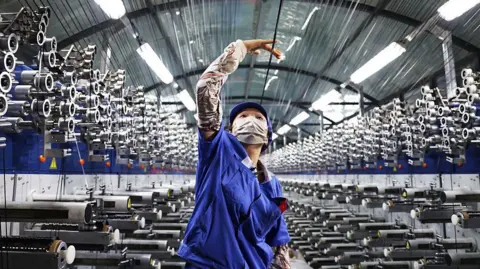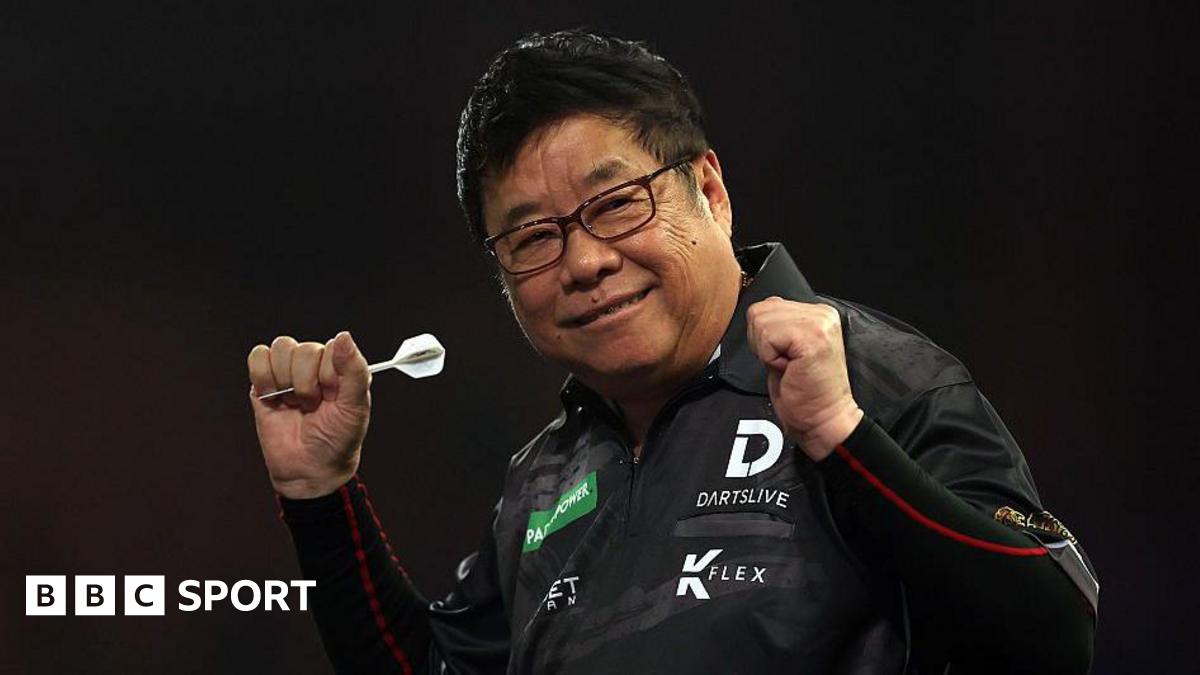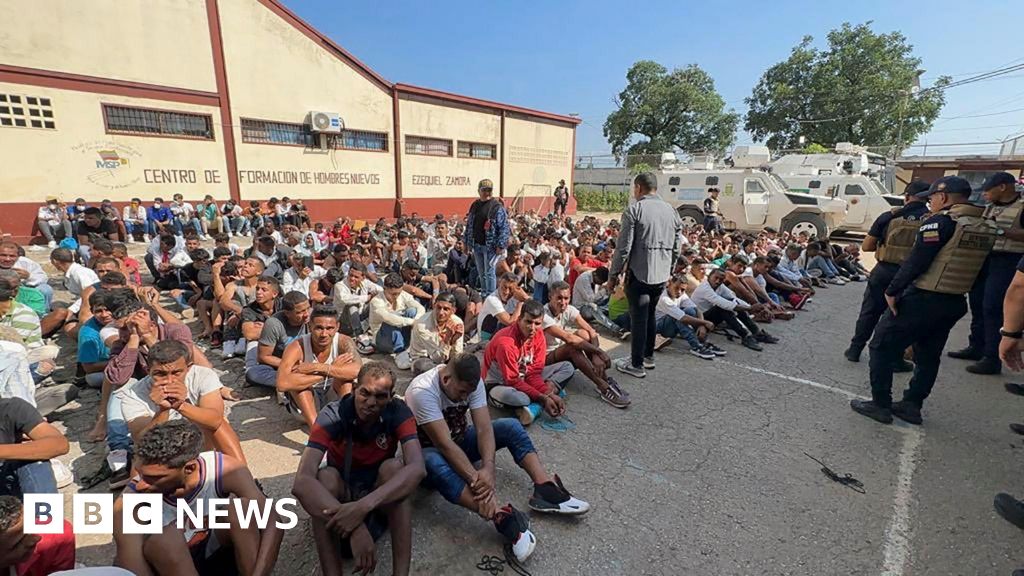Fan Wang
BBC News
Reporting fromSingapore

 AFP via Getty Images
AFP via Getty Images
Economies in Asia were among those hit hardest by tariffs announced by US President Donald Trump on "Liberation Day" in April.
From traditional US allies like Japan to the Asean bloc spanning South East Asia, many - particularly export driven economies reliant on the US markets - have been scrambling to strike deals before a 1 August deadline.
So how did they fare in the latest announcements and which economies were hit the hardest?
US allies: South Korea, Japan, Taiwan, Australia
America's key allies have fared better than others in the region.
Japan and South Korea, whose cars and semiconductors are essential to US customers were facing a proposed 25% tariff in April.
Both countries also have important military ties with the US.
However, both countries managed to reduce this to 15% by the end of July, after sending trade delegations to Washington to finalise the deal.
On 22 July (US time), Trump announced the Japan agreement as the "largest trade deal in history". The agreement with South Korea was officially unveiled on July 30.
Taiwan - one of the world's largest major semiconductor manufacturers and key US ally - also saw its tariff reduced, from 32% in April to 20%. But it's not yet clear if its chip industry will face separate sectoral tariffs.
Its president Lai Ching-te said on Friday that the current rate was "temporary" as negotiations with Washington are still ongoing.
Australia, which faced a 10% tariff in April, appears to have avoided an increase for now. In contrast, neighbouring New Zealand saw its rate rise from 10% to 15%. Wellington's Trade Minister Todd McClay said the country was "unfairly penalised" and had asked for a call with US ambassador and trade negotiator Jamieson Greer, to "start making a case" for a lower levy.
What about China and India?
China, though absent from today's announcement, remains the elephant in the room.
Diplomatic talks between Beijing and Washington have intensified in recent months - first in Geneva in May, London in June, and earlier this week in Stockholm.
According to our Asia Business Correspondent Suranjana Tewari, Beijing is likely seeking a continued suspension of US export controls on key technologies such as semiconductors, in exchange for maintaining a stable supply of rare earth minerals.
For its part, the US is expected to press China on curbing fentanyl production, improving market access for American firms, increasing Chinese purchases of US goods and agricultural products, and encouraging more Chinese investment in the US.
The two sides have now agreed to seek a 90-day extension of their trade truce, currently set to expire on 12 August.
India, who Trump has consistently described as a "good friend" was hit with a 25% tariffs on goods imported from India, along with "an unspecified penalty" for its purchases of Russian oil and weapons.
US Secretary of State Marco Rubio said on Thursday that Delhi's relationship with Moscow remains a "point of irritation" in India-US ties.
This marks a slight reduction from the initial 27% tariff proposed in April, which was later paused.
Asean countries face very different outcomes
Countries in South East Asia are facing sharply different outcomes following the latest announcement.
When President Trump made his dramatic tariff announcement on 2 April, nowhere was the shock greater than in this region, whose entire world view and economic model is built on exports.
The original levies went as high as 49% on some countries, hitting a range of industries from electronics exporters in Thailand and Vietnam to chip makers in Malaysia and clothing factories in Cambodia.
Among the 10 countries in Asean, as the South East Asian regional bloc is known, Vietnam was the first to negotiate with the US, and the first to strike a deal, lowering its tariff rate from 46% to 20%.
Though some reports suggest Hanoi does not agree with Trump's numbers, Vietnam effectively set the benchmark for the rest of the region.
According to today's updated list, most other countries - including Cambodia, Indonesia, Malaysia, the Philippines, Bangladesh, Sri Lanka, Thailand, and Vietnam - now face tariffs of 19% to 20%. Brunei stands apart with a slightly higher rate of 25%.
Laos and Myanmar were hit hardest, facing the second-highest levies at 40%. The rationale behind their higher rates is unclear, but Dr Deborah Elms, head of trade policy at the Hinrich Foundation, suggests their limited market access, low purchasing power, and close ties with China may have influenced the White House's decision.
Meanwhile, Singapore's tariff rate remains unchanged at 10%. The city state imports more from the US than it exports.
How did other countries in the region fare?
Tariff rates vary across the Indo-Pacific.
Pakistan's tariff rate of 19% is the lowest of any South Asian country - and significantly lower than that of its neighbouring archrival, India.
As ties between Pakistan and the US have warmed up under Trump's second term - Pakistan even nominated Trump for the Nobel Peace Prize in June - the relatively low tariff rate is expected to give a particular boost to Pakistan's textile industry.
Textiles account for nearly 60% of the country's total exports, most of which go to the US. In the meantime, Pakistan's main competitors in the sector - India, Bangladesh, and Vietnam - have all been hit with higher tariffs.
Afghanistan, Fiji, Nauru, and Papua New Guinea are on the lower end, each facing a 15% tariff. Kazakhstan has received 25%.
It's worth noting that the rates announced today are not final, points out Dr Elms.
"Executive order says that the president reserves the right to change them, to modify them based on conversations or changing events," she said.
"So first, the president can make whatever decision he wants. Second, he has given his agencies quite a lot of latitude to address trade obstacles in ways that they see fit."
Additional reporting by Osmond Chia in Singapore and Jonathan Head in Bangkok.
.png)
 4 months ago
15
4 months ago
15








 English (US) ·
English (US) ·